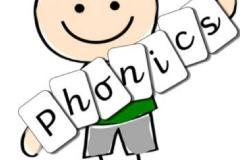Children who are in age group of 4-10 can join the class. Phonics helps children to read and write.
Phonics is a method for teaching people how to read and write an alphabetic language. It is done by demonstrating the relationship between the sounds of the spoken language, and the letters or groups of letters or syllables of the written language.
Reading by using phonics is often referred to as decoding words, sounding-out words or using print-to-sound relationships. Since phonics focuses on the sounds and letters within words (i.e. sublexical),[11] it is often contrasted with whole language (a word-level-up philosophy for teaching reading) and a compromise approach called balanced literacy (the attempt to combine whole language and phonics).
Phonemic awareness (PA) is sometimes confused with Phonics, however, PA is the ability to hear, identify, and manipulate the individual spoken sounds — unrelated to their letters. PA, a subset of phonological awareness, is strongly related to the learner's oral language skills and is critical in learning to read.[17] To assess PA, or teach it explicitly, learners are given a variety of exercises, such as adding a sound (e.g., Add the th sound to the beginning of the word ink), changing a sound (e.g. In the word sing, change the ng sound to the t sound), or removing a sound (e.g., In the word park, remove the psound). Phonemic awareness and the resulting knowledge of spoken language is the most important determinant of a child's early reading success.[18] PA is sometimes taught separately from phonics and at other times it is the result of phonics instruction (i.e. segmenting or blending phonemes with letters).
On the other hand, phonics advocates say that most words are decodable, so comparatively few words have to be memorized. And because a child will over time encounter many low-frequency words, "the phonological recoding mechanism is a very powerful, indeed essential, mechanism throughout reading development".[58] Furthermore, researchers suggest that teachers who withhold phonics instruction to make it easier on children "are having the opposite effect" by making it harder for children to gain basic word-recognition skills. They suggest that learners should focus on understanding the principles of phonics so they can recognize the phonemic overlaps among words (e.g. have, had, has, having, haven't, etc.), making it easier to decode them all.












